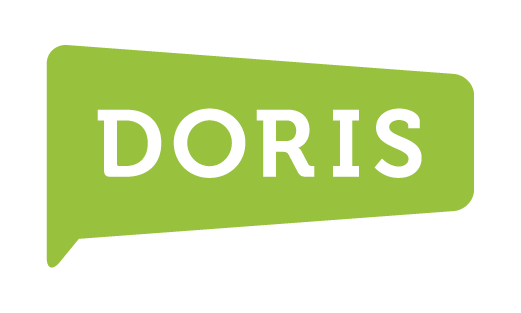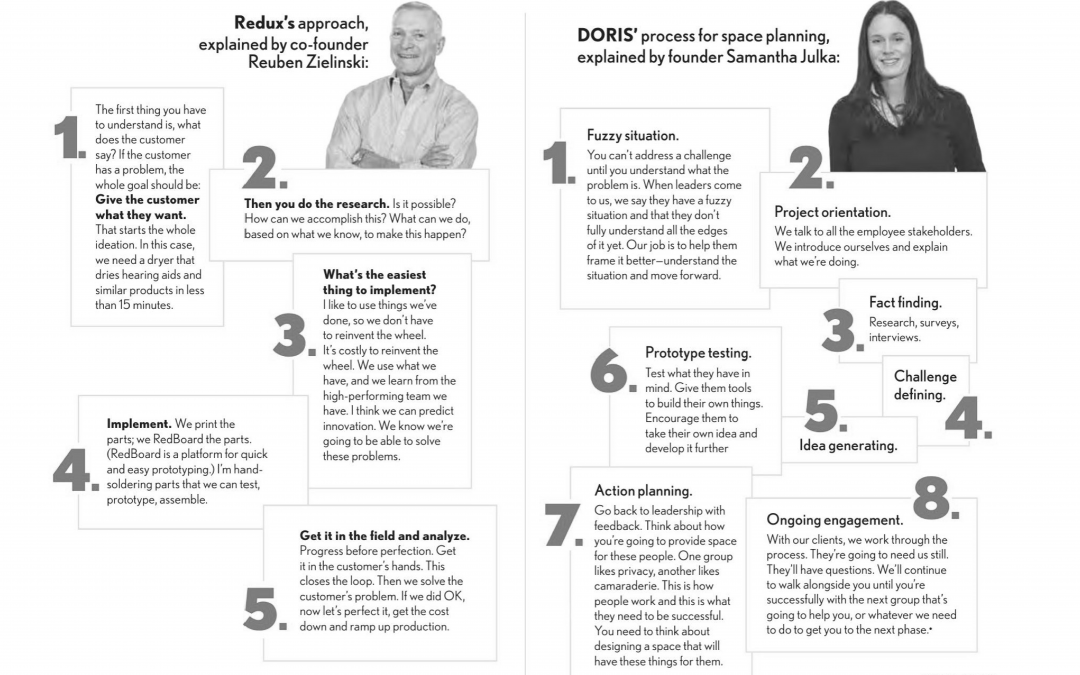Design thinking is generally described as a five-step process, with specific names for each step. But in reality, the people and companies that use design thinking adapt their own take on it, by combining or breaking out some of the steps or using a more conceptual approach.
Still, even the adapted methods have common traits: They start solving a problem by talking to the people affected by it and end with a circle of prototypes or proposals that they analyze.
DORIS’ process for space planning, explained by founder Samantha Julka:
Want more of DORIS?
Don’t miss a single word. Click the link below to subscribe to the IBJ for more articles like this!
Fuzzy situation. You can’t address a challenge until you understand what the problem is. When leaders come to us, we say they have a fuzzy situation and that they don’t fully understand all the edges of it yet. Our job is to help them frame it better—understand the situation and move forward.
We talk to all the employee stakeholders. We introduce ourselves and explain what we’re doing.
Fact finding. Research, surveys, interviews.
Challenge defining.
Idea generating.
Prototype testing. Test what they have in mind. Give them tools to build their own things. Encourage them to take their own idea and develop it further.
Action planning. Go back to leadership with feedback. Think about how you’re going to provide space for these people. One group likes privacy, another likes camaraderie. This is how people work and this is what they need to be successful. You need to think about designing a space that will have these things for them.
Ongoing engagement. With our clients, we work through the process. They’re going to need us still. They’ll have questions. We’ll continue to walk alongside you until you’re successfully with the next group that’s going to help you, or whatever we need to do to get you to the next phase.
Caption courtesy of the Indianapolis Business Journal

